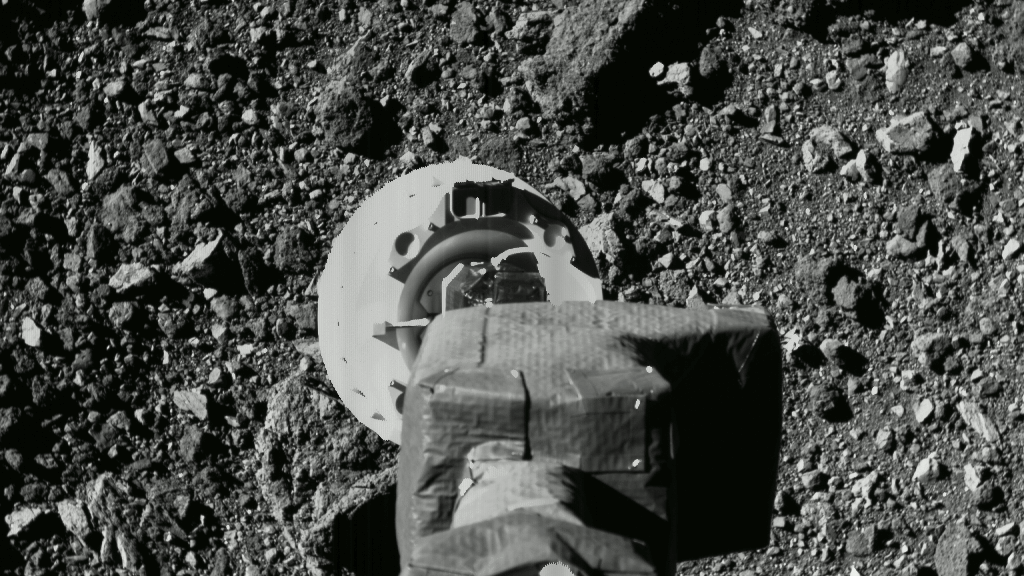This weekend, the first of what will probably turn out to be 700 to 800 thinkers -- neuroscientists, psychologists, philosophers, artificial intelligence researchers, and anthropologists, among others -- will converge in Tucson, as they have every other year since 1994, to explore the matter in a conference, "Toward a Science of Consciousness."
The conference, which officially runs April 10-15, is hosted by the Center for Consciousness Studies at the University of Arizona, a unique institution that has as its goal nothing less than the exploration and elucidation of this central mystery of human existence.
In the last few years, there has been a flowering of scientific work on the once untouchable subject of consciousness. The key to this renaissance is that neuroscientists, psychologists, and philosophers have begun to see how the inner life of the mind can be approached in a relatively concrete way. And the Tucson conferences have been at the center of this movement.
The conference is no "fringe" gathering of weird New Agers. The organizers work overtime to ground their activities in solid science and analytic reasoning. But there is still room for some speculation about the nature of it all, as the icing on the cake.
Among the notables attending this time around will be philosopher John Searle, Nobel Prize-winning neurobiologist Gerald Edelman and cognitive scientist Francisco Varela.
Some of the more interesting conference sessions include a dialog between an achromat (one who can't experience color) and a philosopher; a dialog between a "face-blind" individual and a neuropsychologist who works on the brain's face-recognition processes; sessions on synesthesia, defined as the ability of some people to "hear" color" and "see" sounds; as well as discussions on consciousness and volition; and explorations of whether synchronized electromagnetic oscillations in the brain are the key to consciousness.
Unlike many specialized conferences of this type, the public is invited. After all, it's your reality, too.
For a long time in psychology, the study of mind and behavior, when it came to consciousness you might as well have been inquiring into that infamous debating point of medieval churchmen, namely the number of angels that can dance on the head of a pin.
That's because the behaviorists, a grim group of pseudo puritans if ever there was one, ruled the psychology roost for the better part of the 20th century. Their motto: "If you can't measure it, it ain't worth thinking about -- and William James be damned."
James, of course, is considered the father of modern psychology. The 19th-century American blueblood cut a brilliant path in science and letters; among his chief interests was exploring consciousness -- his own and others'. But the sheer nastiness and savagery of the early 20th century, not to mention the immense strides of the harder sciences, put a stop to such seemingly self-indulgent folderol.
All of a sudden, though, thanks to advances in neurophysiology, computational science and even quantum physics, the answer to the question of how it is that the brain produces the seemingly vast and varied realm of personal experience we call the mind appears tantalizingly within our grasp.
On the other hand, the fact that learned types with impeccable credentials are, in all sincerity, still debating the assumption that brain functions are entirely responsible for producing "mind" perhaps shows just how far science has yet to stumble along a dimly lit path to what passes for full understanding.
It's actually a long-standing debate, going back to the roots of Western culture. Even the ancient Greek philosophers had clashing opinions on the matter.
At the very least, however, today's best and brightest academicians and scientists have boldly embarked anew upon what promises to be a fascinating journey that may one day bring us knowledge and powers beyond our wildest imaginations.
Along the way they may even come up with some really cool ultravideo games.
NO ONE HAS more clearly defined the issues confronting today's consciousness researchers than David Chalmers.
A brilliant, Oxford-educated Australian transplant currently teaching philosophy at the UA, Chalmers looks like a young Sir Isaac Newton and dresses like a guy who plays a mean garage band bass.
He confesses he sometimes wishes he could have been a physicist or mathematician 400 or 500 years ago, when scientific inquiry was wide open and none of the crucial discoveries had been made.
"These days, most of science seems to involve filling in gaps in the framework," he says. "But when it comes to the science of the mind today, it's the other way around -- you get the feeling nobody knows anything."
As a student he started off in math and physics, and gradually developed an interest in consciousness on the side.
Sitting around a table, B.S.-ing about the phenomenon of consciousness with his friends, all of them coming up with theories of their own, the whole business "almost seemed too much fun for someone to think about for a living," Chalmers recalls.
But that's exactly what he wound up doing. In 1994, Chalmers, then at the University of California, Santa Cruz, submitted a paper to the first UA consciousness conference. It created a minor sensation and has pretty much set the agenda for a majority of thinkers and researchers brave enough to tackle this slippery subject.
In the paper, Chalmers neatly divided the problem of consciousness into two parts -- easy and hard.
"The easy problems really aren't all that easy, though," he cautions. "We'll undoubtedly be working on them for perhaps 200 years yet, but people are making progress."
They're questions he believes researchers should be able to answer using the tried-and-true Scientific Method coupled with increasing neurological knowledge and computational and technological prowess.
In Chalmers' framework, "easy" problems include explaining the brain's ability to:
· discriminate, categorize, and react to environmental stimuli;
· integrate information;
· report on its own mental states;
· focus attention;
· exert deliberate control over behavior.
Researchers armed with magnetic resonance devices, computers and whatnot are currently making advances in these areas every day.
But the "Hard Problem," as Chalmers calls it, is another matter entirely. It's stated in its simplest form at the top of this story.
Chalmers' 1996 book, The Conscious Mind: In Search of a Fundamental Theory, gets to the heart of the matter, as does another book, Explaining Consciousness: The Hard Problem, a collection of articles responding to his 1994 conference paper.
The Hard Problem comes down to determining how standard physiological processes -- or any physical processes at all, for that matter -- translate into the seemingly enchanted realm of subjective experience -- the multi-million-color, stereophonic, warm-cold, love-hate, all-encompassing, walking-talking Super-Duper Cinerama extravaganza going on inside your head every waking and dreaming moment of the day.
Anyone who's seen The Matrix already has an inkling of what reality, as we commonly know it, may very well be: a simulation.
Instead of evil computer aliens imposing their version of reality from the outside, however, your brain appears to be constructing reality from within on the fly. Every moment your brain is processing a tsunami of sensory data as well as information from its own internal states to produce whatever it is you're experiencing right now.
But few thinkers purport to understand how all of these brain functions supposedly give rise to the reality inside our noggins.
Chalmers, a steely-eyed rationalist when the need arises, is not above indulging in a little speculation on the matter. And -- surprise, surprise -- he suggests that perhaps consciousness is a bit too complicated to be invested exclusively in our puny, palpitating brain tissues.
"You know, we have physicists who want to build a so-called Theory of Everything using just a few basics, such as spacetime, mass and charge," Chalmers notes. "They want to explain everything in terms of a few reductionist components. And they can certainly explain a whole lot of complicated stuff that way -- maybe even chemistry, life and behavior.
"But consciousness seems to be left out. And so what I tend to think is that if we're reasoning consistently about these things, if we've got something that these fundamentals can't explain, then we need something else which is new and fundamental. So I've argued that perhaps we need to view consciousness as a kind of fundamental constituent of reality."
You heard right:
The world's foremost thinker on the Hard Problem is speculating -- and Chalmers would be the first to stress it's only speculation, mind you -- that consciousness may one day very well turn out to be a basic building block of the universe. Like photons are to light, or cream filling is to Twinkies, consciousness may prove to be an inherent requirement of all that surrounds and composes us.
That would be a hard problem indeed for the common Western mind to comprehend, floating as it is in a thin broth of cause-and-effect, seeing-is-believing scientific rationalism.
Critics -- chiefly the somewhat anxious, scientifically-minded Western ones -- point out that if you merely substitute the word "God" for "consciousness" in this seemingly bizarre scenario, you've suddenly got the makings of a pretty good mystical religion.
Not surprisingly then, Chalmers notes several Buddhist scholars are scheduled to attend the upcoming conference. Chalmers denies any religious associations, though; he says the Buddhists will be discussing methodology -- meditative techniques for monitoring internal states and gathering consciousness data in the privacy of one's own skull.
Shades of William James.
BUT BEFORE WE all go romping off, Beatles-like, to embrace Eastern meditation techniques, mental states and even religious doctrines uncomfortably alien to our deeply rooted burgers-'n'-fries cultural traditions, there's at least one avenue of Western thought that's mighty fun to consider in light of the Hard Problem of consciousness.
It's an area of arcane knowledge so weird and twisted that it makes even terrible Shiva, the dancing Hindu god of destruction and regeneration, look like a cuddly Barney doll.
Quantum Theory is a view of physics based on the concept of the subdivision of radiant energy into finite quanta -- or packets. Physicists apply the theory to numerous processes involving transference or transformation of energy at the sub-atomic scale.
Reality on this unimaginably teensy-weensy scale seems savagely unreal indeed, with things popping in and out of existence, morphing into one another, lounging in what's called "superposition," and behaving like a wave at one moment and a discreet particle in the next. Time -- whatever that is -- apparently moves backward or forward at the quantum level. Subatomic particles such as photons, or light energy, when put to various tests, reveal the ability to exchange information at a distance, with no apparent connection that we bumbling, humongous humans can currently discern up here, in our comfy, classic Newtonian universe.
"Weird" doesn't even begin to cover it. And what's more, as The New York Times recently reported, government and private industry are currently throwing piles of cash at researchers racing to tap into quantum states for a future generation of supercomputers that could, in theory at least, consider all aspects of a problem in a single instant.
But that's only the half of it.
FOR THE OTHER half -- the far stranger and perhaps more wondrous half -- we must check in with Dr. Stuart Hameroff, whose hobby for the past 30 years or so has been gnawing away at the Hard Problem. His day job involves passing gas at University Medical Center.
Hameroff is an anesthesiologist, but he moonlights as one of the world's foremost authorities on tiny structures in our cells called microtubules.
The cell, of course, is the basic building block of life, billions of which make up the living tissues of our bodies -- including brain tissue. Within each of these cells are what are called microtubules -- thin, relatively rigid protein structures, almost like the cell's skeleton. For many years, biologists have known about their role in mitosis, the process of cell division. In one-celled creatures like the paramecium, some microtubule structures stick out of the cell wall, acting as sensors and propelling the organism smartly through its soupy little world.
But let's let Hameroff pick up the story:
"In medical school in 1972, I was doing cancer research, and I was watching cells divide under a microscope. I saw these little guys [microtubules] who knew where to go and what to do. There seemed to be some kind of intelligence running the show."
Right about that time, it was discovered that microtubules were present in all cells, and not just during mitosis. For 30 years prior to that, the electron microscope fixative agent had been dissolving the elusive structures, so cells had been erroneously seen as relatively formless gobs of water.
"When I was taking college biology," Hameroff recalls, "it was thought that everything was floating around like a minestrone soup."
But it turned out that simply wasn't true. Thanks to microtubules, researchers discovered, there's a highly ordered structure inside cells.
All of which is fairly riveting stuff -- if you're into basic biology; but Hameroff, who looks a tad like a bald-as-a-billiard-ball Albert Einstein, had much bigger paramecia to fry.
He recalls being delighted at the microtubule discovery.
"By then I'd started to become obsessed by the intelligence of microtubules in cell division. My real interest had always been the brain, the mind and consciousness; and come to find out, the brain's neurons are completely full of microtubules."
In the '70s and '80s, he spent a lot of time and effort studying microtubules and modeling how they could possibly process information in a way analogous to computers.
"I did some simulations of microtubules as computer-like cellular automata with physicist Steen Rasmussen at Los Alamos. We published some papers about information processing in microtubules. We were basically explaining cell organization in terms of classical computation."
In those days most researchers were thinking of the brain as a classic computer. In earlier times people thought of it as a collection of electrical circuits. And before that as a steam engine; and before that...well, we can go all the way back to the ancient Greeks, who seemed to conceive of the brain as some sort of impressionable sealing wax.
Even today many people still think of the brain as a souped-up PC, with its 100 billion neurons, each of which has 1,000 to 10,000 synapses, acting as switches hundreds of times per second. The number of operations in this scheme is, well, mind-boggling -- perhaps 10 to the 15th processes per second for the whole brain.
But Hameroff argues that we need to go one step further, and view each neuron as kind of a universe unto itself. "We need to look down inside, to see the microtubules organizing those neurons."
Think of our old pal, the paramecium, he says. "Swimming around it finds food, it finds mates, it has sex, it does all kinds of interesting things -- but it doesn't have any synapses. It uses the microtubules in its cytoskeleton for locomotion, sensation and organization."
Each human neuron has about 10 to the 7th microtubule subunits. And microtubules may switch a lot faster than the much bigger and more cumbersome synapses -- in the nanosecond range. Suddenly that gets you roughly near the amount of switching power in one neuron as you would have in the entire brain under the old model, Hameroff says.
"In the whole brain, that would be roughly 10 to the 27th," he says. "So you get 12 or so orders of magnitude more when you consider consciousness, or information processing, going down to the level of microtubules."
And, yes, there is evidence for information processing in microtubules, Hameroff maintains. "They tweak them at one end and a signal propagates. So there's a lot of circumstantial evidence and some real evidence for signaling and communication in and among microtubules."
Anyway, on to 1990:
"So I'm working on microtubules as information processors," Hameroff recalls, "and suggesting the idea of consciousness going down to this lower level, inside of cells. But people would say, 'Well, so what? Let's say you're right -- how does that explain consciousness?' "
Chalmers had not yet formulated the Hard Problem, but Hameroff had just bloodied his nose on it. Critics were asking roughly the same basic question -- how does all this supposed buzzing and clicking in the microtubules produce subjective experience?
"Also, people were saying, 'If these microtubules are just fancy computers, then computers should be conscious -- unless you view it as some sort of emergent phenomenon,' " Hameroff says. "What some people say is that consciousness is some novel property that emerges at a higher level in a hierarchical system. Like wetness is an emergent property of water, or the Great Red Spot of Jupiter is an emergent property of dust, storms and heat."
However, that doesn't seem likely to Hameroff -- he argues that no other emergent phenomenon appears to have the properties of consciousness.
"Well, anyway, I was stuck," he says. "I had to admit they were right."
At that bleak point Hameroff was lucky enough to read The Emperor's New Mind, a book by Roger Penrose, the brilliant Oxford mathematical physicist, and winner, with world-renowned black hole guru Stephen Hawking, of the prestigious Wolf Prize in physics.
In his book Penrose demonstrates a prodigious mastery of mathematics and difficult quantum physics concepts as he launches an attack on the worldwide artificial intelligence community, whose members confidently predict that some day a sufficiently advanced computer will be able to do everything the human mind can do.
But Penrose argues that the mind is so intimately tied with the warp and woof of basic reality that no computer is ever likely to achieve anything close to the full-color symphony of human consciousness, with its ever-dancing muses of inspiration, insight and originality.
The mathematician initially postulated the essence of mind occurring at the level of neurons firing or not firing, which he saw as tying in with quantum effects.
"I thought that was too high a level," Hameroff says. "I thought that maybe I had the structure and he had the mechanism."
Hameroff wrote to Penrose and sent him some papers. The anesthesiologist mentioned that he'd soon be in England for a conference, and Penrose invited him to Oxford.
"So I met with him," Hameroff recalls. "I spent several hours talking to him, basically showed him a book I'd written about microtubules and information processing. He was taken by it, for a number of reasons -- including the fact that the mathematical wrapping of the microtubules' protein structure seems to match the fibonacci series.
[First developed -- in Christendom, at least -- by mathematician Leonardo Fibonacci (1170-1240), to predict the number of rabbits menacing a royal garden over time, fibonacci patterns -- the sums of pairs of previous numbers: 1, 2, 3, 5, 8, 13, 21... -- are common in nature and appear to have been well known to the Greeks and Egyptians.]
"He was really taken by that," Hameroff says of Penrose. "Anyway, at the end of our conversation, he said he was going to a conference about consciousness at Cambridge. A couple of weeks later, I was about to fly home, and I had dinner with someone in London. And he said, 'Hey, you'll never guess -- a friend of mine just came from Cambridge, and Roger Penrose is talking about your work with microtubules.' I thought, wow."
So the two of them next got together at a conference in Sweden, where they spent a week kicking around quantum consciousness.
At the time Hameroff and UA colleagues Al Kaszniak (psychology), Al Scott (mathematics), and Jim Laukes, of the Extended University, were getting the Center for Consciousness Studies off the ground and organizing the first Tucson conference. Penrose showed up for that.
Over the ensuing years, Hameroff and Penrose developed their theory, publishing three articles together, and along the way managing to stir up a rip-roaring international food-for-thought fight. The artificial intelligence folks loathe them (professionally speaking, of course), the reductionists and dualists have tried to shoot them down on philosophical grounds, and physicists have attacked them on Quantum Theory issues. It seems everyone has his own theory of consciousness, including Sir Francis Crick, co-discoverer of DNA. In short, it's a chaotic zoo out there in consciousness research.
And looming over everyone and every philosophical and scientific approach, like some ferocious King Kong that must eventually be reckoned with, is the Hard Question.
Chalmers, who this year has taken over major organizational duties for the Tucson conference from his biggest fan, Hameroff, says he thinks Hameroff and Penrose's theory is intriguing, but he has his doubts.
Hameroff, however, believes he's now got an inkling at least of how he and Sir Roger's baby could be The Chosen One.
IT SHOULD BE stressed that what we're about to discuss is, in essence, conjecture. It's theory; and however scientific and elegantly reasoned their approaches, most theories, to put it bluntly, eventually turn out to be wrong.
Whether Hameroff and Penrose, are wrong, however, matters a great deal.
It matters profoundly in terms of mankind's fundamental relationship to the universe; and, on a far more frivolous level, it will undoubtedly matter whether these two rather unlikely amigos split the Nobel Prize one day -- which they most assuredly would...uh, if only they're right.
"I didn't understand all of Roger's book at first," Hameroff isn't ashamed to admit. "It's very, very dense...You know, I think I get it now, at least to a large extent."
Everybody's who's anybody in advanced computing and consciousness studies is scrambling in the same way to understand Quantum Theory these days.
A main tenet of the theory is that on the quantum level, particles can exist in what's called "superposition," or to our way of thinking, in two or more places at the same time.
And while that battered old PC on your desktop computes by representing information in discreet "bits" of 1 or 0, quantum computers would be using something called "qubits," composed of both 1 and 0 at the same time -- in superposition. Another way to describe superposition is to say that the qubits are "communicating by quantum entanglement."
Anyway, with a whole bunch of qubits in superposition, so the big-money computer geeks are betting, that bland beige box on your desk could perform what they call "near-infinite quantum parallelism," a form of computational processing that would blow the blubber right off Bill Gates' butt. When these quantum superpositions collapse, violá -- the computer would, in theory, cough up its solution.
Basically, Hameroff and Penrose are the first to view microtubules as quantum computers.
The first problem with that is temperature. If quantum computing can be created in a machine, it appears it will have to be done at near absolute zero, to avoid what's known as "decoherence," the accidental or unintended random collapse of the qubits' superpositions.
In the Penrose-Hameroff model, when a few qubits -- assuming there are such things, of course -- in your well-ordered brain decohere and collapse via an effect called quantum gravity, it means your mind is made up and you're going to order the jalapeño cheese-poppers instead of the healthful salad. Random decoherence on a massive scale inside your brain would mean you are a cheese-popper, and there's no hope for rehabilitation.
How can the brain avoid random decoherence? Hameroff points out that microtubules in their quantum states may be encased in a gelatinous isolation. As far as temperature, Hameroff points out that a laser is a quantum device that operates at normal temperatures. "That's because it's pumped," he says. "And if you have an actively pumped system, that provides the coherence."
Regular incoherent light, composed of quanta called photons, when pumped through a ruby laser emerges in an intensely coherent state. Our metabolic processes, of course, pump the human brain, and Hameroff notes that research in the 1960s and '70s has already shown that when energy is supplied to protein dipoles in a membrane or microtubule, they'll oscillate coherently, roughly at the microwave frequency.
The second problem with quantum collapse isn't really a problem at all. It's more like one of those really cool things some people think about when they're high on whatever it is people get high on these days:
When quantum collapse occurs, it can throw information backwards or forwards in time.
There are philosophers and neuroscientists who argue that consciousness lags behind reality, and that we're engaged in nothing more than a series of mindless reflex actions followed by a memory of the event or events, with the brain somehow inserting a fictional consciousness into the memory mix. Hameroff scoffs at such talk, preferring instead to muse that the backward-forward flexibility of time in quantum collapse accounts for our ability to act now, in real time, rather than just after the fact.
The phenomenon, he speculates, may allow us to anticipate events, such as the proper moment to swing a bat just as a pitcher hurls the baseball in our direction.
And well beyond facilitating a mundane pop fly, the time-bending quanta may even provide a rationale for so-called psychic phenomena, Hameroff theorizes.
But the ultimate weirdness, of course, may lie at the very base of our most intimate experience -- consciousness itself.
In the Penrose-Hameroff model, which they call "orchestrated objective reduction" ("Orch OR"), quantum computation occurs in cytoskeletal microtubules within the brain's neurons, and -- here comes the new and truly weird part -- links cognition with proto-conscious experience and Platonic values embedded in spacetime geometry.
"The basic idea," Hameroff says, "is that consciousness involves brain activities coupled to self-organizing ripples in fundamental reality."
Or, to put it another way, while the brain simulates reality based on sensory input, maybe it's also intimately connected to that reality at the quantum level -- remember those photons that seem to communicate without any apparent means of doing so?
In such a scheme, the qualities of the world -- like flowers, colors and that person you have your eyes on -- are also, reassuringly, really "out there."
Perhaps, Hameroff speculates, a connection to the universe at such a fundamental level helps give rise to the experience of this incredibly detailed reality going on around us. Certainly such a process might seem far more "real" to us than if our brains were merely indulging in a simulation, however complex, based on the usual sensory data and old-fashioned, non-quantum computation.
And if the Penrose-Hameroff model proves correct, the Hard Problem isn't really so hard at all, becoming instead just another series of really hard "easy" problems, which science may eventually unravel.
If that Saturday afternoon ever comes to pass, imagine the frat boys fighting over the Pamela Sue Anderson ultravideo game.
BUT PENROSE, TOWERING creative genius that he is, takes the whole scheme to a seemingly outrageous conclusion, postulating the existence of what for more than 2,000 years of Western culture has largely been thought to be an unattainable dream -- namely the Platonic Realm.
The ancient philosopher insisted that ideals are real, that they exist and that our world is but a pale reflection of their wondrous existence.
Penrose has speculated this bizarre state of affairs is located beyond the Planck scale, the infinitesimally small realm where spacetime itself is no longer smooth, but quantatized, or bumpy. While we normal folk tend to think of it as being in one location, like a specific fairyland, physicists speculate the Plank scale is actually the fundamental level of reality, permeating and creating classic Newtonian matter. After all, Einstein told us that matter is nothing more than curvature in spacetime.
Penrose rejects the current "in" view among quantum physicists, namely that the Planck scale holds at least 11 other dimensions necessary to make something called Superstring Theory work as a Theory of Everything. When it comes to other dimensions, Penrose says, what we see in our four-dimensional world is all we get.
Here reside the ideals and qualities that make up our consciousness, Penrose predicts. Here may reside the proto-consciousness that even Hard Problem guru Chalmers speculates may be fundamental to all that we see, hear and experience.
Wouldn't such a place be nothing less than the mind of God?
Hameroff shakes off such wild speculation, quickly changing the subject.
"I think big discoveries in quantum theory may be imminent," he says. "We may know a lot more about it fairly soon."
And he and Penrose are willing to put up or shut up -- they've formulated 20 testable predictions based on their theories.
"Some of them are starting to come true," Hameroff says, with just a hint of wonder and excitement seeping into his usually calm, reasoned voice.
Toward a Science of Consciousness, Tucson 2000, will be held April 10-15 at various locations on the UA campus and the Tucson Convention Center. Admission is $300 per person, or $145 for full-time students and postdoctoral fellows, and free to all UA faculty and students.
Workshops, some of which are described as "particularly accessible to the public," will be held April 8-9. Admission for the workshops is $45, half-day; $90, full-day. Workshops will be held at the Holiday Inn City Center.
For more information on the conference, call the UA Center for Consciousness Studies, 621-7724, or access the website, www.consciousness.arizona.edu.










